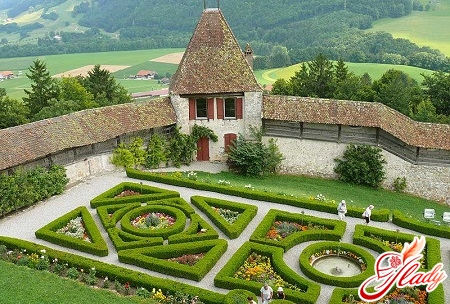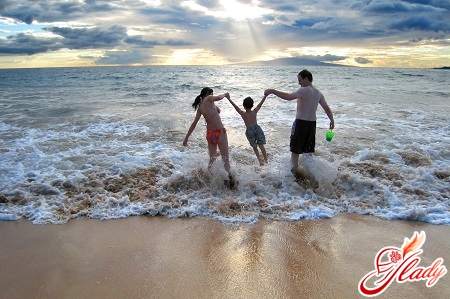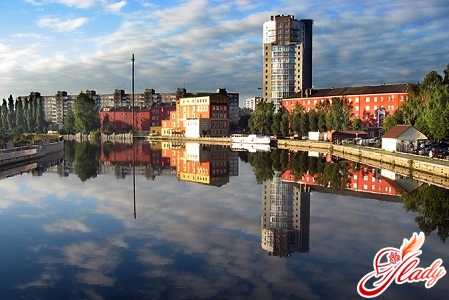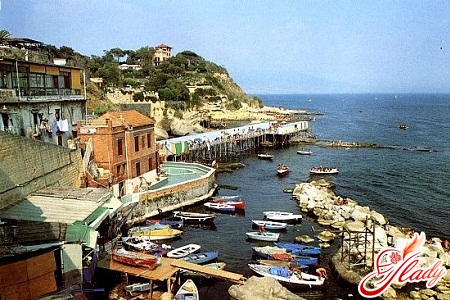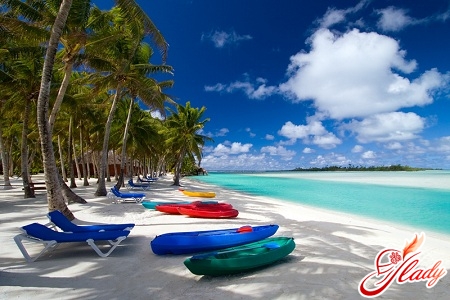 Wild tropical vegetation, transparentocean waters, comfortable, secluded and almost untouched beaches. Under these figures, excluding the latter, you can fit a few hundred islands, which as if specifically for the idea of a great marketer created for the advertising company chocolate Bounty. And only fifteen islands in the Pacific really correspond to those epithets that it is customary to enumerate, referring to the analog of paradise on earth - these are Cook Islands.
Wild tropical vegetation, transparentocean waters, comfortable, secluded and almost untouched beaches. Under these figures, excluding the latter, you can fit a few hundred islands, which as if specifically for the idea of a great marketer created for the advertising company chocolate Bounty. And only fifteen islands in the Pacific really correspond to those epithets that it is customary to enumerate, referring to the analog of paradise on earth - these are Cook Islands.
Geographic curiosity
If you dig into history and what is knownfor today about the great traveler James Cook, a certain historical and geographical curiosity will become visible with the naked eye. The fact is that the first these islands were not James Cook at all, but the seafarers Alvarado de Mendanya and Pedro Fernandez Kyros, the Spaniards, already in the year fifteen hundred and ninety-fifth year. Although found - it's rude. They swam to the island of Pukapuka, looked around, gave it the name of San Bernando and ... swam on. For a hundred and fifty years, this part of the Pacific was forgotten. Lost until one thousand seven hundred and seventy-three, when James Cook went on his journey. But either the islands were so well camouflaged, or Cook was busy with something else, but he explored only part of the archipelago, four small islands, missing the largest - Rarotonga. And if there had not been a riot on the Bounty ship, this island would have remained undetected for a long time. Let us note once again that Rarotonga is the largest of the Cook Islands, and he has the right to appropriate another name for himself - the Bounty, because the members of this ship were the first Europeans to leave their mark on the island. But the current name of the archipelago was received from the Russian researcher I. F. Krusenstern. In the early nineteenth century, he put the islands on the map and gave them a general name in memory of the "scattered" James Cooke - the Cook Islands.
A few dry facts
For the sake of completeness, one should talk aboutthe geographical position of the Cook Islands, the population, the political structure, and if we sum up, a few more dry facts about this truly magical place. The Cook Archipelago is located in the southern hemisphere, near New Zealand. And even the exact name of them sounds very solid - the territory in free association with New Zealand. The head of the state of Cook Islands is the ruling monarch of Great Britain, now it is Elizabeth the Second. All cases are managed by the authorized representative appointed by her. By the way, he is the only celebrity of the archipelago. And one more important fact: the Cook Islands have their own constitution, and the government can issue its own laws. And, despite the fact that the archipelago belongs to New Zealand, the government of New Zealand has no right to influence or amend the legislative acts. The archipelago is an independent territory. The official languages of the islands are English and Maori, but on each island, which is quite natural, they speak their own dialect. The indigenous inhabitants of the Cook Islands are Maori. They came to these lands fifteen thousand years ago, but also the Cook Islands were visited periodically by representatives of various ethnic groups. The main income residents of the archipelago receive from the tourism business, which is quite natural. But there are additional items of income in the treasury: the export of pearls and exotic fruits, and since the announcement of the islands offshore zone - also banking. The capital of Cook's archipelago, Avarua, rested comfortably on the largest of the fifteen islands - Rarotonga. And like in any other capital of the world, here are the main commercial and administrative buildings. At Rarotonga is the international airport of the Cook Islands. Of course, it is inferior in size to large airports, but the Boeing quite safely land on its landing strip. And just because Rarotonga is the airport, any journey to the Cook Islands begins with getting to know their capital. 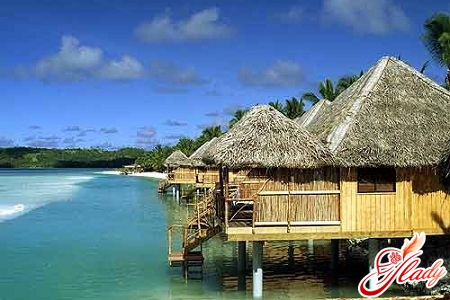
Rarotonga
Rarotonga is a very unusual island. Everything, from its form to the vegetable world, leads to astonishment. The island from a bird's-eye view resembles an eye in the middle of the ocean. The fact is that Rarotonga is almost completely surrounded by coral reefs. The water around the ideal oval island is a light azure hue, and the island itself, like a curious pupil, "looks into the blue of the sky", or admiring its own beauty and tenderness of colors, or admiring the color of the sky. Avarua until recently was more like a sleepy island wilderness. But the development of tourist infrastructure has led to an extraordinary revival, and now the city has become more consistent with its rank. But despite everything, the architecture of the island is dominated by the influence of Polynesian culture. This allowed to keep a harmonious friendly and hospitable atmosphere in the capital. In the east of Avarua is the main shrine of the island - Seven-in-One-Coconut-Three - coconut palms planted in a circle. If you believe the legends, all the palms grew from one seed as a sign of the gods who gave the lands of Rarotonga an unprecedented fertility. On Rarotonga, an island of volcanic origin, really fertile soils than on coral islands, and here grow citrus, coconuts, pineapples and sweet potatoes. Do not forget that the Cook Islands was once a field for many missionaries. You can even admire the first missionary village in the western part of the island and the cemetery where Papayha is buried - the first preacher who brought the Word of God to the aborigines. Here is the first Christian church of the islands. Its construction dates back to one thousand eight hundred and forty-ninth year. The open-air ethnographic museum is also located in the west of the capital. Here you can learn about the crafts, way of life, culture and cuisine of the islanders, discover a hundred ways to prepare a coconut and enjoy real Kuk dances and songs. But not only the creations of human hands on Rarotonga are worthy of attention. Aborigines are very sensitive to natural resources. Excursion to the Whitmore waterfall invariably produces a vivid impression on tourists, and acquaintance with the island gradually develops into a full rest. You can soak up on the beaches, make a trip to the Rua Manga mountain and swim on the coral shallows. Only to swim across the border of the shallows is not worth it, since further the bottom drastically goes to a depth of three kilometers. So Rarotonga - a kind of oasis in the middle of the abyss.
Mangaia
The Cook Islands is a paradise not only for divers,lovers of natural beauty and hiking. This is also a dream come true speleologist. At one time, the movement of tectonic Pacific plates led to the formation of the island of Mangaia on the surface of the ocean. The bizarre relief of limestone hills above which the waters of the ocean first worked, and then the winds with rains, are eaten out by caves. Inside the cave are a phantasmagoria in stone. True, most of them are closed to visit, as the locals have chosen them as the burial place of their fellow tribesmen. If you drive through the small villages of the island, you can buy items of folk crafts as souvenirs. Mangaia is the place where the most beautiful beads and necklaces are made from rain snails "navel". Because of the laborious process of collecting snails, their small numbers and extraordinary beauty, in the past, shells were considered the equivalent of coins. Therefore it becomes simply vital to have in the arsenal of their ornaments such unusual monist.
Atiu
The island of Atiu - the place where the legend of love was bornTangora and Inatot. It is an island of exotic birds and a cave of fifteen halls. Any traveler who wants to go to the Cook Islands dreams of coming here. To begin with, the expression of lush vegetation becomes understandable on the skeleton. At Atiu, literally every centimeter of the earth is occupied by exotic plants, and the crowns of trees for their nests have chosen colorful ptahs. The word "silence" leaves your vocabulary, as soon as you step on Atiu. During the day, the air is filled with the singing of birds and insects, and at night the rustle of the surf and the cries of the night birds. In addition to natural treasures on Atiu there is something that any interior designer dreams about. These are quilted quilts "tivaevae". The cloth of such a blanket is woven from vegetable fibers, embroidered with threads of the same origin and dyed with natural dyes, which are extracted from the plants and minerals of the island.
Aitutaki
Surrounded by the transparent waters of the lagoon, the islandAituataki is a place where tales and stories are told in carved patterns. Just the main craft of local residents became woodcarving. The Cook Islands are famous for their tree decorations around the world. In the town of Arutanga you will not find two identical houses. Each owner tries to decorate his home with carved ornaments to the best of his talent and aesthetic taste. The church in Arutang, the oldest and most beautiful, is also decorated with carvings. 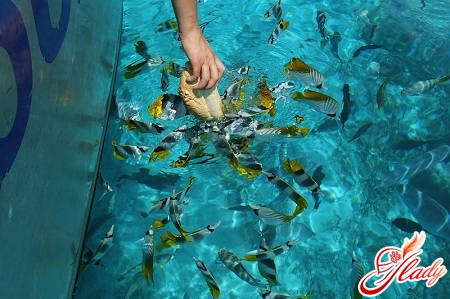
Manuae, Takutea, Suvorov and Nassau
These four islands, despite the fact that theyare far from each other, are somewhat similar. To begin with, it would be a huge exaggeration to call them big. Manuae and Te-Au-O-Tu are part of one atoll. You can not live here, because the entire territory of the atoll is a marine reserve. In the spring, when turtles lay eggs in the coastal sand, excursions - and they become impossible. Nassau, of course, you can choose to relax, but only to those who love solitude. Whether a joke, the whole population of the island is only seventy-five people. Even a boat from Pukapuk appears here every two to three days. And on the island of Suvorov is the only national park. So everything here is under the protection of the state. And notice, the locals pronounce the name of the island - Suvarrow. Habitual for our hearing, the island was given by the explorer Kruzenstern, who visited the Cook Islands, and for Maori it is too difficult to pronounce, and they have remade the name in their own way. The island of Takutea, as well as the atoll of Suvorov and Manuae, is uninhabited. Here you can really feel yourself completely cut off from civilization.
Manihiki, Rakahanga and the atoll of Tongarev
Visiting these three islands will be welcome forany girl. In addition to natural beauties, here are pearl farms. Mother-of-pearl shells store pearls of all shades of the night. And what could be more beautiful than a real black pearl! You can make an excursion to the underwater farm only with the permission of the leader and accompanied by a local employee. And after the underwater excursion, you can buy a diadem of black pearls made by local craftsmen. Black pearls are used in most traditional ornaments on these islands.
Mauke, Mitiaro, Pukapuka
Three of these islands can be called the cradle of cultureand a repository of the traditions of local residents. Just imagine, here is preserved that way and those conditions of life, which existed before the arrival of Europeans on the islands of the archipelago! And this was not done to please the tourists, as it might seem at first glance, but at the behest of the soul. The influence of tourists on the life of aborigines here is minimized. However, nobody rest here. Rest and enjoy, but not to the detriment of the local population.
Palmerston
Palmerston's atoll is named so by Cook himself in honor ofPrime Minister of England, a prominent politician and patron of science and art. A very interesting story is connected with this island. The ship's carpenter, William Masters, arrived at Palmerston with his Polynesian wives. The permission to become the bigamist he has received personally from the British government, and two wives business did not stop, hardly later he married the third time. This polygamist, in combination, was the sole ruler of the island until his death, and left behind seventeen children. And in the year 1854, Palmerston was transferred to the property of a large Masters family free of charge. The descendants of the three branches of this family still live on the island, and marriages within each branch are prohibited. The Cook Islands, despite their remoteness from the mainland, is a very interesting and peculiar place. Here you can find everything a spoiled traveler can. But their main advantage is that these places are almost not spoiled by the mass raids of tourists. Only you, the ocean and the vast expanses of heaven We advise you to read:




